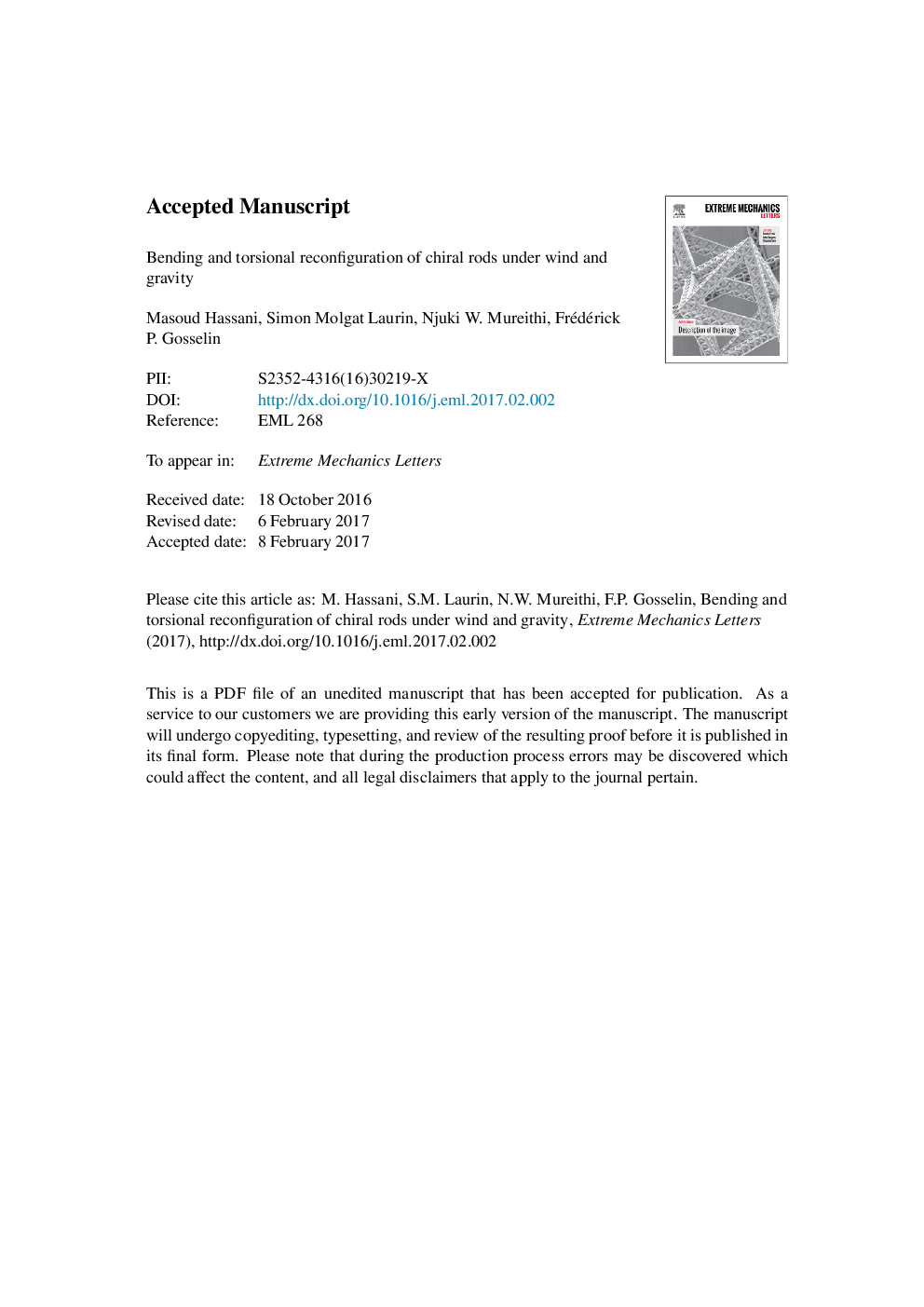| Article ID | Journal | Published Year | Pages | File Type |
|---|---|---|---|---|
| 5014505 | Extreme Mechanics Letters | 2017 | 23 Pages |
Abstract
We seek to understand the effect of chirality on the reconfiguration and the self-buckling strength of chiral plants subjected to wind and gravity by experimental and theoretical modeling of their large deformation. Chiral rod and ribbon specimens are made of polyurethane foam reinforced with nylon fibers and ABS plastic. Wind tunnel tests are performed to evaluate the effect of chirality on flow-induced reconfiguration. A theoretical model is developed by coupling the Kirchhoff rod theory with a semi-empirical formulation for aerodynamic loading evaluation. A range of geometrical, material and flow parameters are studied in the experimental and theoretical model. It is shown that for rods, chirality decreases the maximum root bending moment. For ribbons, chirality leads to a trade-off with higher self-buckling strength but also higher root bending moment. Moreover, chirality reduces the effect of the loading direction on deformation. Chirality plays an important structural role in the interaction of slender structures with fluid flow and gravity loading.
Related Topics
Physical Sciences and Engineering
Energy
Energy Engineering and Power Technology
Authors
Masoud Hassani, Simon Molgat Laurin, Njuki W. Mureithi, Frédérick P. Gosselin,
